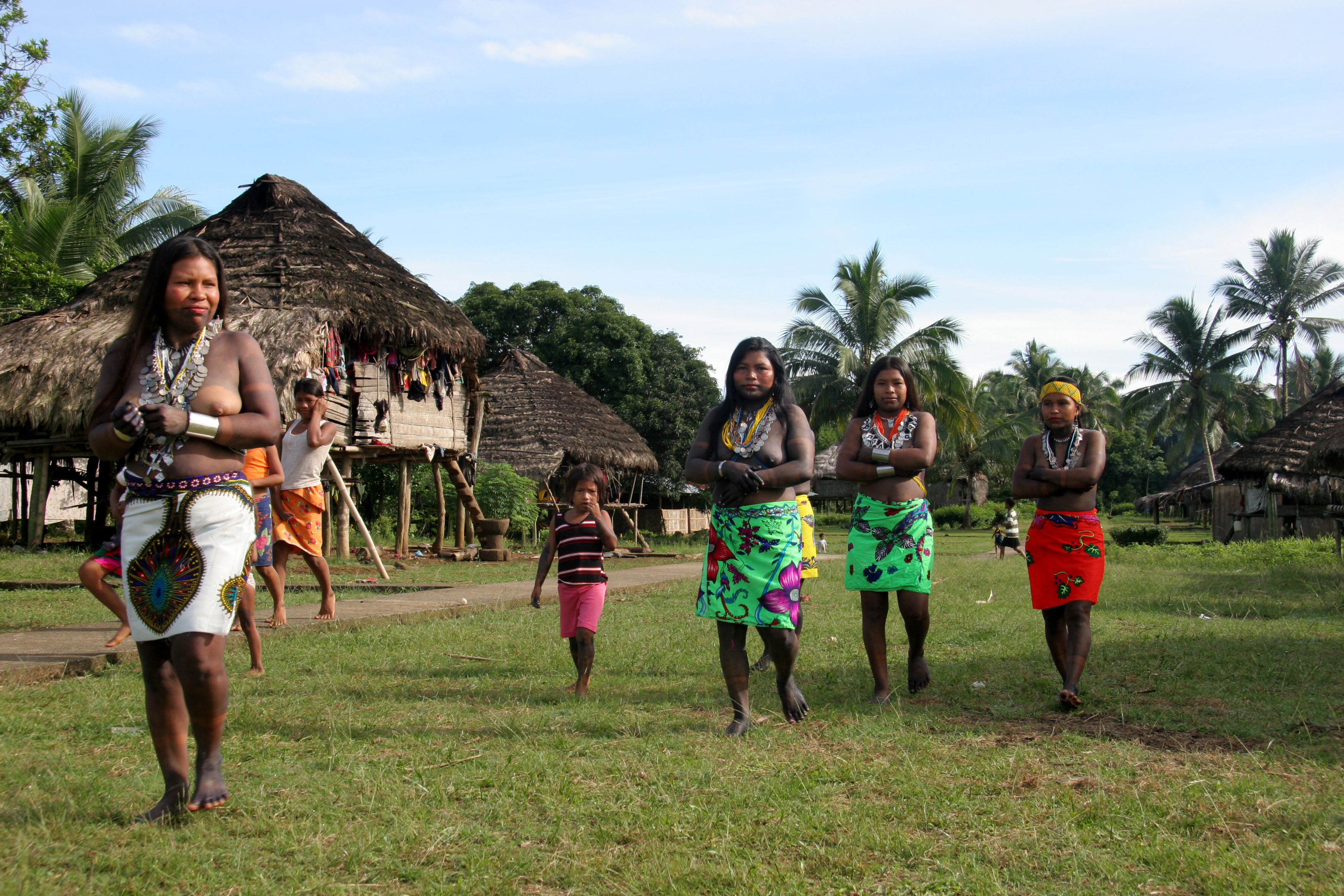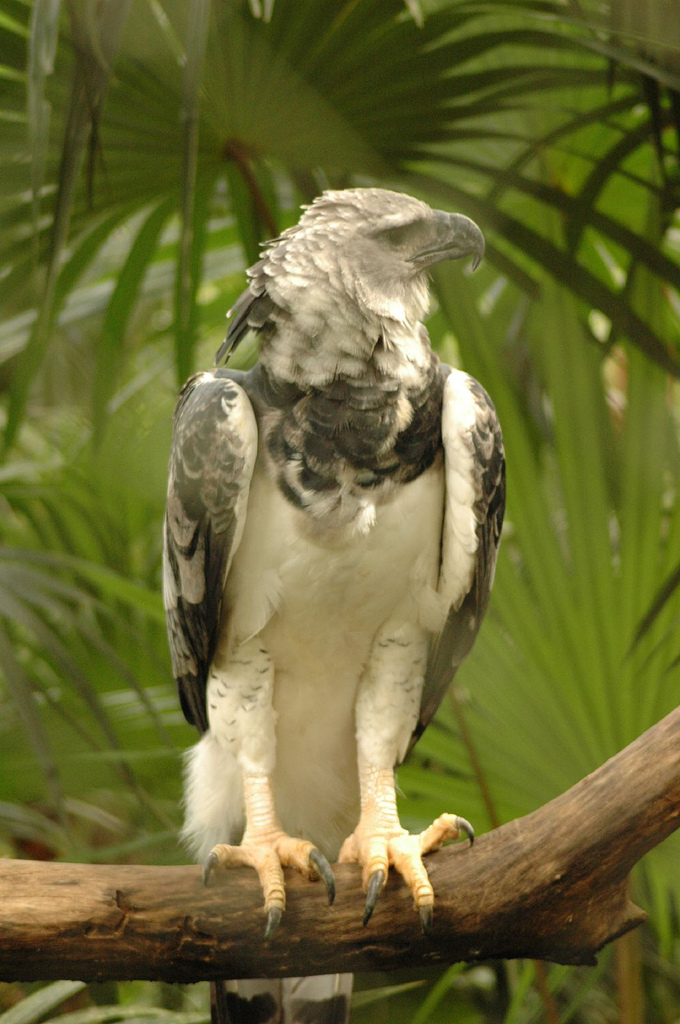|
Santa Cruz De Cana
Santa Cruz de Cana, popularly called Cana today, is the site of a former gold mine, and fort and village, founded by Spaniards, located in Darién Province, Panama. Now located within Darién National Park, the site is best known today for bird-watching. History The Spaniards were engaged in very active mining activity at Cana (the mine being called "Espíritu Santo de Cana") during the mid-17th century--with reports that mining began in 1665--and it was the most important gold mine in Panama. The mine was subject to raids by English pirates a number of times in the early 1700s. Nathaniel Davis wrote that at the time of the 1702 raid, the town had around 900 houses and a church. The mine was abandoned after a shaft collapse that killed two miners in 1727, in addition to attacks from pirate and Indigenous peoples.Redwood, Stewart DThe history of mining and mineral exploration in Panama: From Pre-Columbian gold mining to modern copper mining Boletín de la Sociedad Geológica Me ... [...More Info...] [...Related Items...] OR: [Wikipedia] [Google] [Baidu] |
Darién Province
Darién (, , ) is a province in Panama whose capital city is La Palma. With an area of , it is located at the eastern end of the country and bordered to the north by the province of Panamá and the region of Kuna Yala. To the south, it is bordered by the Pacific Ocean and Colombia. To the east, it borders Colombia; to the west, it borders the Pacific Ocean and the province of Panama. The area surrounding the border with Colombia is known as the Darién Gap, a large swath of undeveloped swampland and forest. With no roads, it is the missing link of the Pan-American Highway. Place names The name originates from the language spoken by the Cueva, an Indigenous tribe destroyed by the white European conquistadors during the 16th century. The Tanela River, which flows toward Atrato, was Hispanicized to Darién; the region and its communities took the same name. Santa María la Antigua del Darién, the first city founded in Tierra Firme, also took its name from the river. Subsequentl ... [...More Info...] [...Related Items...] OR: [Wikipedia] [Google] [Baidu] |
Provinces Of Panama
Panama is divided into ten provinces ( es, provincias) and four provincial-level indigenous regions (Spanish: ''comarca A ''comarca'' (, or , or ) is a traditional region or local administrative division found in Portugal, Spain and some of their former colonies, like Brazil, Nicaragua, and Panama. The term is derived from the term ''marca'', meaning a "march, ...s indígenas'', often shortened to ''comarcas''). There are also two indigenous regions within provinces that are considered equivalent to a ''corregimiento'' (municipality). Provinces Indigenous regions (''comarcas indígenas'') Provincial level Corregimiento-level See also * ISO 3166-2:PA * List of provinces and indigenous regions of Panama by Human Development Index References {{DEFAULTSORT:Provinces Of Panama Subdivisions of Panama Panama, Provinces Panama 1 Provinces, Panama Panama geography-related lists ... [...More Info...] [...Related Items...] OR: [Wikipedia] [Google] [Baidu] |
Eastern Time
The Eastern Time Zone (ET) is a time zone encompassing part or all of 23 states in the eastern part of the United States, parts of eastern Canada, the state of Quintana Roo in Mexico, Panama, Colombia, mainland Ecuador, Peru, and a small portion of westernmost Brazil in South America, along with certain Caribbean and Atlantic islands. Places that use: * Eastern Standard Time (EST), when observing standard time (autumn/winter), are five hours behind Coordinated Universal Time ( UTC−05:00). * Eastern Daylight Time (EDT), when observing daylight saving time (spring/summer), are four hours behind Coordinated Universal Time ( UTC−04:00). On the second Sunday in March, at 2:00 a.m. EST, clocks are advanced to 3:00 a.m. EDT leaving a one-hour "gap". On the first Sunday in November, at 2:00 a.m. EDT, clocks are moved back to 1:00 a.m. EST, thus "duplicating" one hour. Southern parts of the zone (Panama and the Caribbean) do not observe daylight saving time. ... [...More Info...] [...Related Items...] OR: [Wikipedia] [Google] [Baidu] |
Köppen Climate Classification
The Köppen climate classification is one of the most widely used climate classification systems. It was first published by German-Russian climatologist Wladimir Köppen (1846–1940) in 1884, with several later modifications by Köppen, notably in 1918 and 1936. Later, the climatologist Rudolf Geiger (1894–1981) introduced some changes to the classification system, which is thus sometimes called the Köppen–Geiger climate classification system. The Köppen climate classification divides climates into five main climate groups, with each group being divided based on seasonal precipitation and temperature patterns. The five main groups are ''A'' (tropical), ''B'' (arid), ''C'' (temperate), ''D'' (continental), and ''E'' (polar). Each group and subgroup is represented by a letter. All climates are assigned a main group (the first letter). All climates except for those in the ''E'' group are assigned a seasonal precipitation subgroup (the second letter). For example, ''Af'' indi ... [...More Info...] [...Related Items...] OR: [Wikipedia] [Google] [Baidu] |
Tropical Monsoon Climate
An area of tropical monsoon climate (occasionally known as a sub-equatorial, tropical wet climate or a tropical monsoon and trade-wind littoral climate) is a tropical climate sub-type that corresponds to the Köppen climate classification category ''Am''. Tropical monsoon climates have monthly mean temperatures above in every month of the year and a dry season. The tropical monsoon climate is the intermediate climate between the wet Af (or tropical rainforest climate) and the drier Aw (or tropical savanna climate). A tropical monsoon climate's driest month has on average less than 60 mm, but more than 100-\left(\frac\right). This is in direct contrast to a tropical savanna climate, whose driest month has less than 60 mm of precipitation and also less than 100-\left(\frac\right) of average monthly precipitation. In essence, a tropical monsoon climate tends to either have more rainfall than a tropical savanna climate or have less pronounced dry seasons. A tropical monsoon c ... [...More Info...] [...Related Items...] OR: [Wikipedia] [Google] [Baidu] |
Panama
Panama ( , ; es, link=no, Panamá ), officially the Republic of Panama ( es, República de Panamá), is a transcontinental country spanning the southern part of North America and the northern part of South America. It is bordered by Costa Rica to the west, Colombia to the southeast, the Caribbean Sea to the north, and the Pacific Ocean to the south. Its capital and largest city is Panama City, whose metropolitan area is home to nearly half the country's million people. Panama was inhabited by indigenous tribes before Spanish colonists arrived in the 16th century. It broke away from Spain in 1821 and joined the Republic of Gran Colombia, a union of Nueva Granada, Ecuador, and Venezuela. After Gran Colombia dissolved in 1831, Panama and Nueva Granada eventually became the Republic of Colombia. With the backing of the United States, Panama seceded from Colombia in 1903, allowing the construction of the Panama Canal to be completed by the United States Army Corps of En ... [...More Info...] [...Related Items...] OR: [Wikipedia] [Google] [Baidu] |
Darién National Park
Darién National Park ( es, Parque Nacional Darién) is a World Heritage Site in Panama. It is about 325 kilometers from Panama City, and is the most extensive of all national parks of Panama and is one of the most important world heritage sites in Central America. The Darién National Park is a natural bridge spanning North and South America. In 1972 an area of became part of the Alto Darién Protection Forest. In 1980 the area was declared a National Park. In 1983 an area of became a UNESCO biosphere reserve. The park covers . It is located in southernmost Panama in Darién province and its southern boundary extends along 90% of the Panama-Colombian border. It lies between the range, which parallels t ... [...More Info...] [...Related Items...] OR: [Wikipedia] [Google] [Baidu] |
Boca De Cupe
Boca de Cupé is a corregimiento in Pinogana District, Darién Province, Panama with a population of 1,167 as of 2010. Its population as of 1990 was 901; its population as of 2000 was 902. The town is not served by any paved roads, with the Pan-American Highway to the north ending at Yaviza. It is reachable by boat up the Tuira River. Civilians are not permitted to travel farther east towards Colombia.Moon Central America (2016) ("Travel up the Rio Tuira beyond Boca de Cupe is considered dangerous and has been off-limits for several years. Boca de Cupe itself has a border-police post, but that doesn't necessarily make it safe.")Darien Travel Guide R ... [...More Info...] [...Related Items...] OR: [Wikipedia] [Google] [Baidu] |
Tuira River
The Tuira River is located in the Darién Province of eastern Panama. It flows into the Bay of San Miguel at the province capital of La Palma. It is the largest river in Panama, and one of its tributaries, the Chucunaque River, is the longest river in Panama. The river starts in highlands of Darien, and runs south/southeast, and then north and west. It runs past villages as it flows downstream including Matuganti, Sobiaquirú, El Balsal, Boca de Cupe, Capetí, Yape, Aruza, Unión Chocó, Vista Alegre, and Pinogana.(30 April 2008)Panama: Weary repatriation Relief Web It meets the Chucunaque River at El Real de Santa María and then flows northwest towards La Palma.Tuira River Brittanica.com, Retrieved 30 November 2022 Via the Chucunaque, one can reach |
Populated Places In Darién Province
Population typically refers to the number of people in a single area, whether it be a city or town, region, country, continent, or the world. Governments typically quantify the size of the resident population within their jurisdiction using a census, a process of collecting, analysing, compiling, and publishing data regarding a population. Perspectives of various disciplines Social sciences In sociology and population geography, population refers to a group of human beings with some predefined criterion in common, such as location, race, ethnicity, nationality, or religion. Demography is a social science which entails the statistical study of populations. Ecology In ecology, a population is a group of organisms of the same species who inhabit the same particular geographical area and are capable of interbreeding. The area of a sexual population is the area where inter-breeding is possible between any pair within the area and more probable than cross-breeding with in ... [...More Info...] [...Related Items...] OR: [Wikipedia] [Google] [Baidu] |





